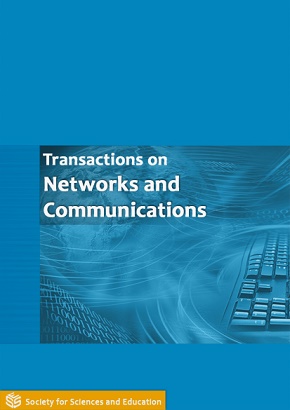The Consumers’ perceptive of Internet-of-Things: Exploring Users’ Acceptance and Purchase Behavior
DOI:
https://doi.org/10.14738/tnc.75.7535Keywords:
Internet-of-Things(IoT), purchase behavior,ChaCha modelAbstract
This paper stands on customer’s view of point to discuss the usage on Internet of Things(IoT). A purchase behavior modelofIoT is constructed based onChaCha model to explore the impact factors that influence customer’s adoption of IoT. The characteristics of IoT itself and customer individualcharacteristics are also included. Then a survey data will be conducted to estimate the parameters of the proposed model. These empirical data are also used to make model calibration. Finally, the application of IoT in marketing management will be present in the conclusion.
References
(1) Bao, H., Yee-Loong Chong, A., Ooi, K.-B., Lin, B.(2014). Are Chinese consumers ready toadopt mobile smart home? An empirical analysis.International Journal of Mobile Communications (Int. J. Mob.Commun.), 12(5), pp.496-511.
(2) Busch,P., Lahti,P. and Werner,R. F.(2014). Colloquium: Quantum root-mean-square error and measurement uncertainty relations.Reviews of Modern Physics, 86 , pp. 1261 -1283.
(3) Chang, Y., Dong, X., Sun, W.(2014). Influence of characteristics of the internet of things onconsumer purchase intention. Social Behavior and Personality: An International Journal, 42(2), pp. 321-330.
(4) Gao, L., Bai, X.(2014). A unified perspective on the factors influencing consumer acceptanceof internet of things technology.Asia Pacific Journal of Marketing and Logistics (Asia Pacific J. Market. Log.)26, pp.211-231.
(5) Kim, S. and Kim, S. (2016). A multi-criteria approach toward discovering killer IoT applicationin Korea. Technological Forecasting and Social Change(Technol. Forecast.Soc. Chang.), 102, pp.143-155.
(6) Lu,Y.,Papagiannidis, S. andAlamanos, E.(2018). Internet of Things: A systematic review of the business literature from theuser and organisational perspectives.Technological Forecasting & Social Change ,136, pp.285-297.
(7) Luce, R. D. (1986). Response times: Their role in inferring elementary mental organization.New York, NY: Oxford University Press.
(8) Ng, C.L. I. and Wakenshaw, Y.L. S. (2017).The Internet-of-Things: Review and research directions. International Journal of Research in Marketing 34 ,3-21.
(9) Parry, G., Brax, S., Maull, R., & Ng, I. (2016). OperationalisingIoT for reversesupply: The development of use-visibility measures. Supply Chain Management: AnInternational Journal, 21(2), 228–244.
(10) Rau, P.-L.P., Huang, E., Mao, M., Gao, Q., Feng, C., Zhang, Y.(2015). Exploring interactivestyle and user
experience design for social web of things of Chinese users: a case studyin Beijing.International Journal of Human-Computer Studies, 80(8), pp.24-35.
(11) Wang, Z.(2014). Bridging media processing and selective exposure: a dynamic motivational model of media choices and choice response time.Communication Research, 41(8), pp.1064-1087.






